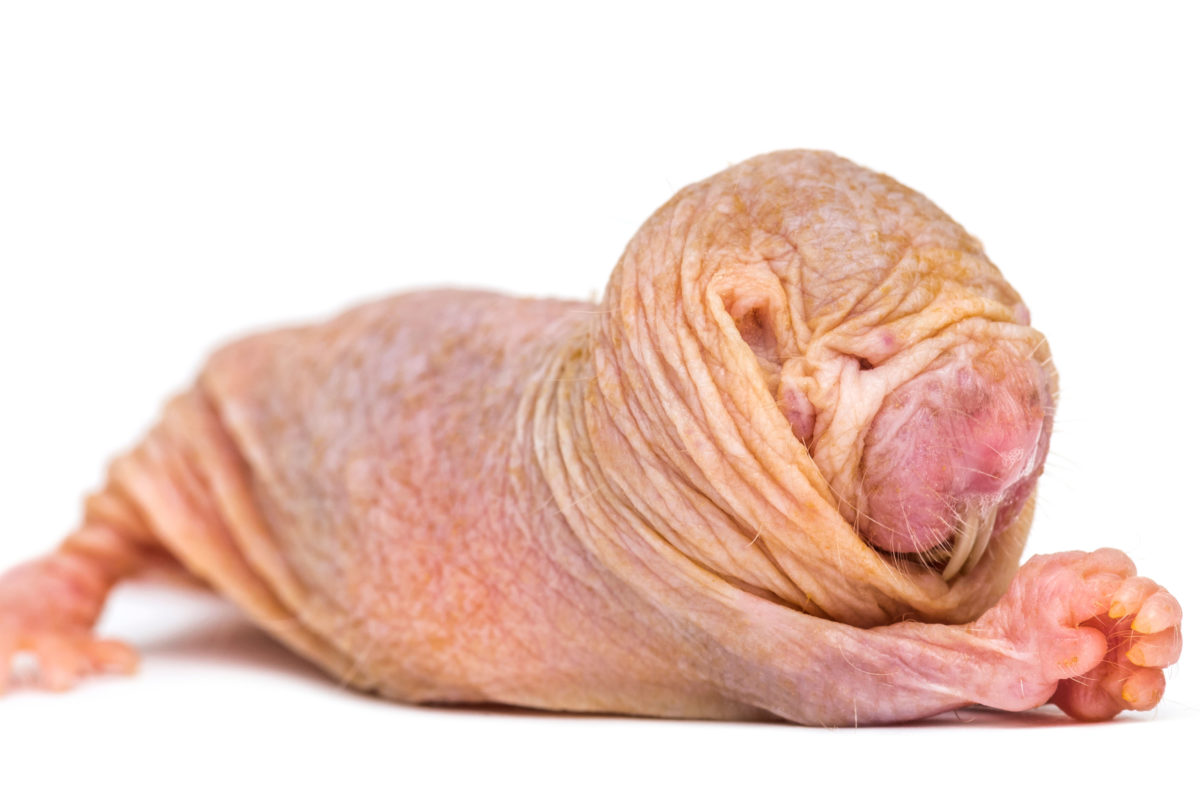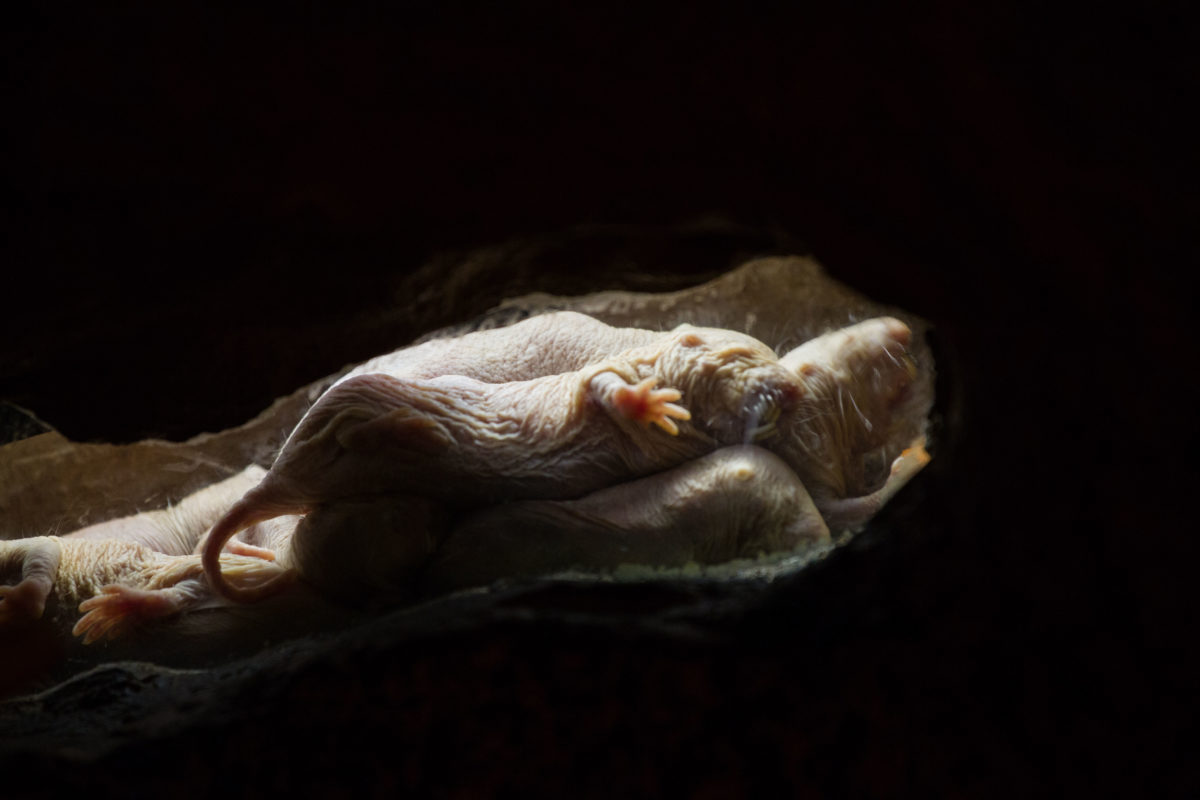- Naked mole-rats have their own dialects that differ between colonies of the rodents, researchers have found.
- The virtually blind animals communicate underground through squeaks, grunts and chirps, and have an “accent” that is determined by the queen of each colony.
- This shared dialect “strengthens cohesion and a sense of belonging among the naked mole-rats of a specific colony,” says Alison Barker, lead author of the new study.
- The finding has important implications for the understanding of our own history, by potentially shedding light into how human linguistic culture evolved.
The naked mole-rat (Heterocephalus glaber), a hairless rodent that lives in the arid areas of eastern Africa, is one of the strangest-looking creatures in the animal kingdom. But what it lacks in looks, it makes up for in extraordinary biology.
A team of researchers has discovered that these wrinkled rodents may have more in common with humans than previously thought: we both can speak in dialects.

Chatty bunch
As they are almost blind, an evolutionary adaptation to their exclusively underground lifestyle, naked mole-rats cannot rely on visual cues. Instead, these extremely social animals communicate by squeaking, grunting and chirping — and they do it a lot.
In a new study published in Science, scientists give insight into the naked mole-rat’s secret language. A team led by Gary Lewin, a professor in neurobiology and head of the Molecular Physiology of Somatic Sensation Lab at Germany’s Max Delbrück Center for Molecular Medicine in the Helmholtz Association (MDC), found that just like humans, naked mole-rats use vocal mimicry from a young age to learn how to communicate. This enables them to develop geographic dialects and accents.
Vocal imitation is something only a handful of other animals can do, among them whales, elephants, primates, parrots and songbirds. The majority of animals are not vocal learners; instead, most species produce calls that are genetically determined, such as a dog’s bark.
So what role do these vocalizations play in the naked mole-rat’s social life?
Greet your queen with a soft chirp
The famously wrinkled rodent lives in subterranean colonies dominated by a queen. Colonies can have as many as 300 members and every individual has a specific role, similar to how bee colonies are socially structured. In this rodent’s world, there are workers, soldiers, and a single breeding female: the reigning queen.

The queen is responsible for controlling and modulating the colony’s voice, and in the long run, preserving dialectal integrity. “The development of a shared dialect strengthens cohesion and a sense of belonging among the naked mole-rats of a specific colony,” Alison Barker, lead author of the study and a neuroscientist at MDC, said in a statement.
After the queen dies, a new matriarch will come into power and impose her own “accent.” Over time, the colony’s dialect will change until it becomes fixed.
Stranger danger
Their unique dialect enables naked mole-rat soldiers to efficiently defend their colony. When a naked mole-rat encounters another, the accent of its chirps will tell whether the other mole-rat is a member of the colony or if it’s a stranger. In the case of the latter, the soldiers will either use their numbers to block tunnels or use their large teeth to fight off the intruder.
“You might even say that these animals are extreme xenophobes,” Lewin says.

Many superpowers
This new finding adds to the naked mole-rat’s CV of odd traits, along with its high tolerance for pain, its ability to thrive under low-oxygen conditions, its resistance to disease, and its ability to defy the biological law of aging. Researchers are optimistic that these fascinating species will help us to better understand our own.
“Naked mole-rats have a linguistic culture that developed long before human beings even existed. The next step is to find out what mechanisms in the animals’ brains support this culture because that could give us important insight into how human culture evolved,” Lewin says.
Banner image of a naked mole-rat. Image used under license from Shutterstock.com
Romi Castagnino is Mongabay’s bilingual writer and presenter. Find her on Twitter and Instagram: @romi_castagnino
Citation:
Barker, A. J., Veviurko, G., Bennett, N. C., Hart, D. W., Mograby, L., & Lewin, G. R. (2021). Cultural transmission of vocal dialect in the naked mole-rat. Science, 371(6528), 503-507. doi:10.1126/science.abc6588
